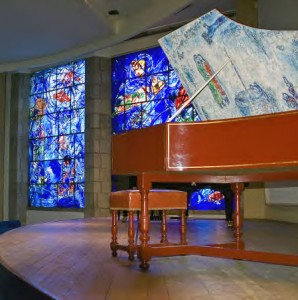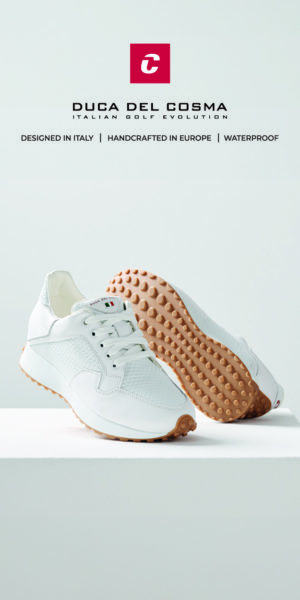Posted on February 15, 2016 in Arts & culture.
Chagall and music, exhibition in Nice from March 5 to June 13, 2016
Tight synthesis of the two exhibitions presented in fall 2015 in Paris (Le Triomphe de la musique at the Musée de la Musique - Philharmonie de Paris) and in Roubaix (Les Sources de la musique à la Piscine - Museum of Art and Industry André Diligent), the exhibition is enriched with new works only visible in Nice: the auditorium wanted by Marc Chagall for its museum, the harpsichord painted by the artist in 1980 and a room dedicated to King David, a major figure in the cycle of the Biblical Message.

Auditorium of the Marc Chagall National Museum with the harpsichord painted by Marc Chagall in 1980 and the stained glass windows of La Création du monde (detail), 1971-1972 © Musée National Marc Chagall / Catherine Weil © Adagp, Paris 2015
Marc Chagall loved music; the traditional Jewish music of his childhood, the popular Russian music of festivals and circuses, as much as the learned music of Bach or Mozart who accompanied him in his creation.
From Vitebsk to Vence, Chagall's paintings are populated by musicians. A crowd of violinists, cymbal bearers, acrobats-musicians and flute players throng there with verve and poetry and naturally spawns with religious figures such as that of the shofar bell ringer, the angel on the trumpet, or David , tutelary figure for Chagall, that of the king-musician whose lyre and song know how to console or harangue men. These musicians evoke a simple life in which music relieves, exalts, tells the human soul.
Looking at his paintings, we finally understand that Marc Chagall cherished music as a carrier of human feelings: complaint, joy, consolation and elevation. Throughout his long career, punctuated by major projects for the theater, ballets or opera, Chagall produced costumes and sets for the Jewish Art Theater in Moscow (1919-1920), then for Aleko ( 1942), The Firebird (1945), Daphnis and Chloé (1958), or The Magic Flute (1967). So many shows that were happy opportunities for the artist to put his art in dialogue with music.
In the 1960s, two prestigious commissions - the decorations of the ceiling of the Paris Opera and the frescoes of the Lincoln Center in New York - made Chagall the music lover, a modern cantor of Euterpe.
All these works bear superb witness to his deep affinities with music. The best testimony of this love however lies in a place he created in Nice for music to live there: the concert hall of the Marc Chagall national museum which continues to host a rich musical program every year. For the museum, Marc Chagall also painted a harpsichord, offered by the Association of American Friends of the Marc Chagall Museum.
curator: Anne Dopffer, general heritage curator, director of the national museums of the XNUMXth century in the Alpes-Maritimes and Johanne lindskog, heritage curator at the Marc Chagall National Museum with the precious help ofAmber Gauthier, art historian.
Pratical information
opening :
every day except Tuesday and May 1 from 10 a.m. to 17 p.m. and until 18 p.m. from May 2
prices :
€ 10, € 8 TR, groups € 8,50 (from 10 people) including collections combined ticket with the Léger museum valid for 30 days: € 13
free for those under 18, for those under 26 (for members of the European Union), the disabled (MDPH or Cotorep card), teachers (current education pass), beneficiaries of certain social minima and for everyone on the 1st Sunday of the month
access:
by plane: Nice Côte d'Azur Airport
by train: Nice Ville SNCF station
by bus: n ° 15 Marc Chagall stop and Nice Le Grand Tour bus, Marc Chagall stop
free parking for coaches and cars
disabled access, disabled toilet
reservations:
by phone: 04 93 53 89 40
free and commented group visits: 04 93 53 87 28
Drawing Now Art Fair: Tatiana Wolska winner 2024
The invention of language by Gertrude Stein and Pablo Picasso
The history of French women's golf at Golf du Sorbier








